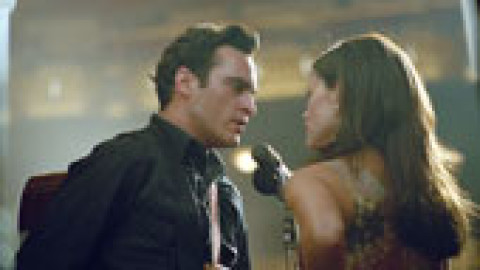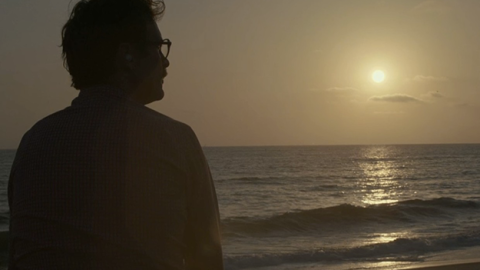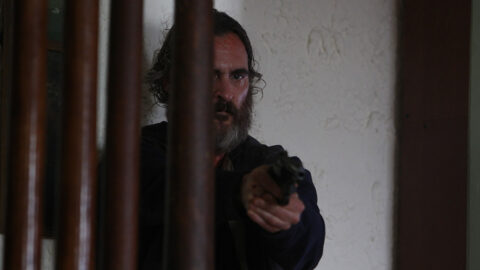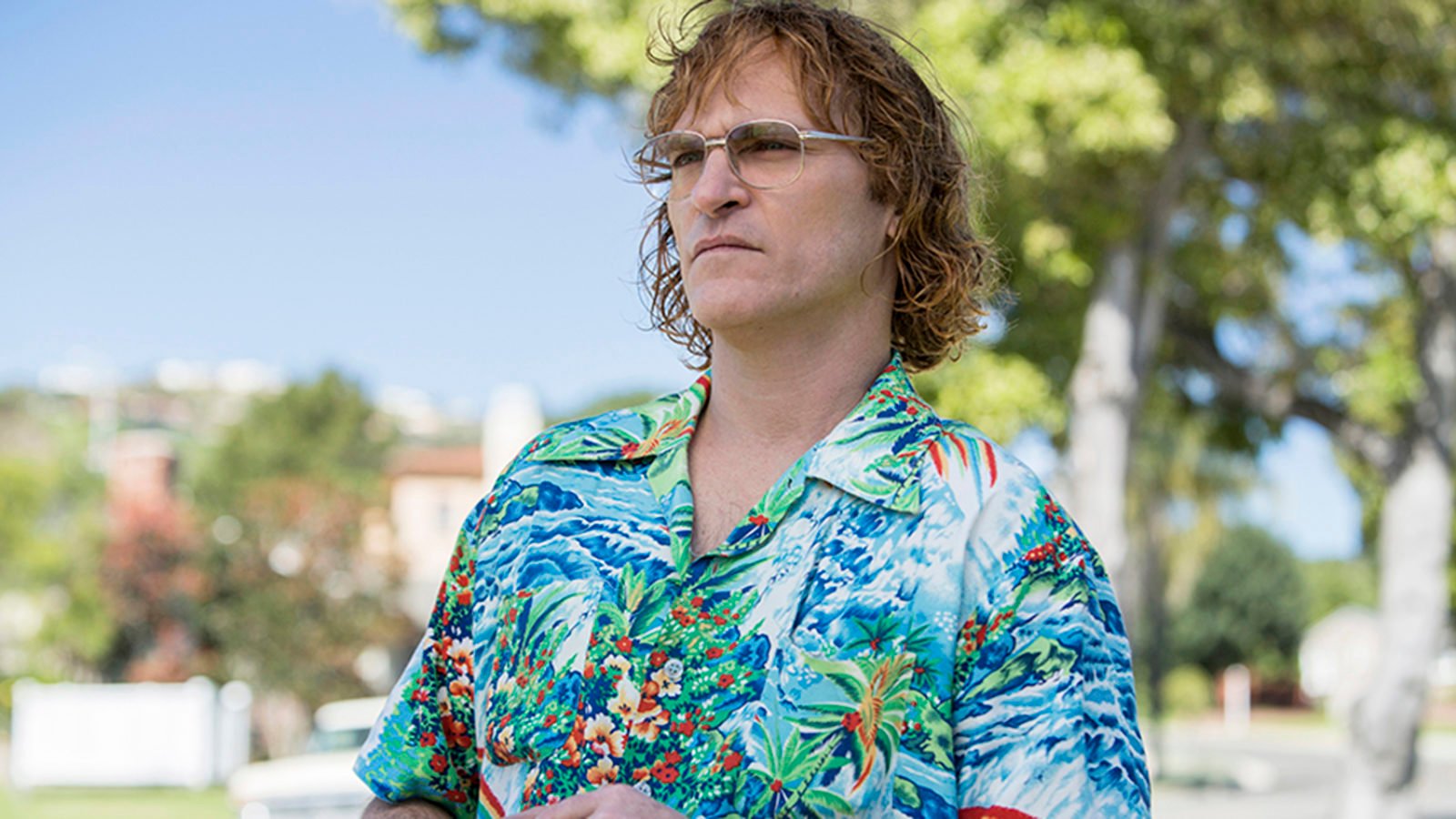
Review: Don’t Worry, He Won’t Get Far on Foot
I began watching Don’t Worry, He Won’t Get Far on Foot with no foreknowledge of the film’s backstory—a state of innocence almost impossible to come by in this day and age. I thought it must be based on a true story: why else make a guy-triumphs-over-handicaps-to-become-an-artist picture except as a docudrama? Why else would Gus Van Sant and Joaquin Phoenix, the director and actor who first paired up in the darkly funny To Die For (1995), embrace the triumph-over-adversity formula complete with a vision and an epiphany, unless it had some special meaning? And hasn’t the very idea of redemption, and the narrative arc that supports it, fallen out of favor among the unruly agnostics of contemporary cinema?
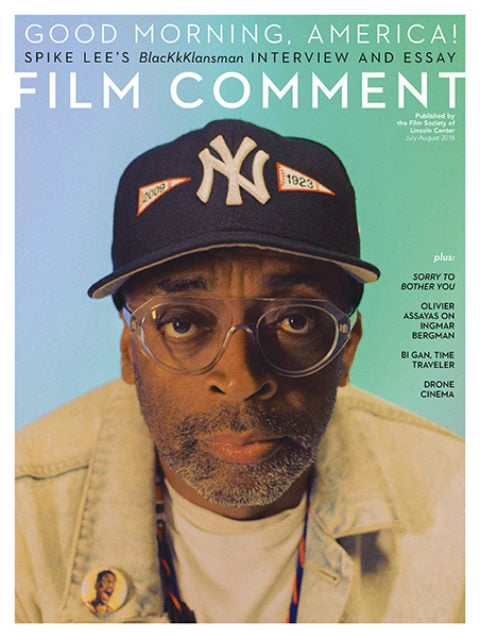
In any case, the cartoon drawings—blunt and edgy—that appear on the screen over the course of the movie are suggestive of some real-life provenance, and suspicions are confirmed in the opening scene when one John Callahan—orange-haired, bespectacled, and wheelchair-bound—speaks to a rapt audience of fans. The place is Portland in the ’70s, and Van Sant cleverly goes back and forth in time, thereby scrambling the too-familiar trajectory of insufferable to inspirational, with at least a third of the film taking place before the fall, and more than half in insufferable territory. We get to know Phoenix’s Callahan, a perennially pissed and pissed-off skirt-chaser with a giant personal axe to grind (his adoptive mother abandoned him). Partying one night in Santa Monica, he hooks up with Dexter (Jack Black), a more determined fuck-up than himself. They go off in search of better booze, blastier parties, bustier babes, and with Black at the wheel, suffer a near-fatal car crash. Dexter walks away without the proverbial scratch, while John winds up in traction, never to walk again and with only minimal use of his hands.
Racing around on his motorized wheelchair, even falling over (Phoenix does his own stunts—terrifying!), John is still drinking, his disposition unimproved when he finally joins a 12-step program and simultaneously discovers a gift for drawing. Group therapy sessions have become a movie cliché, as ubiquitous as drinking and smoking and nightclub scenes were in the ’30s (and perhaps it’s our sad-funny 21st-century version), but Van Sant has given them a fresh, documentary feel by using non-actors (the musician Beth Ditto), or unusual ones: Udo Kier with only a few lines, and a startling and sly Jonah Hill as Donnie, the group leader and John’s sponsor. Almost unrecognizable as a golden-tressed guru, Hill’s Donnie calls his charges “piglets” and spouts New Age religious homilies in a manner both supercilious and heartfelt. The bond between the two comes to feel a little like mutual salvation as the movie follows the storyline of Callahan’s memoir, adapted by Van Sant. Callahan becomes a treasured fixture on the Portland counterculture scene, sending up sacred cows and shibboleths.
The cartoons are treasured for their crudeness, their gleeful lack of polish, which might be a definition of Phoenix himself. One of our most unpredictable actors, baroque, tortured, menacing, sometimes repellent and thrilling at the same time, he is never at ease in his skin and often makes us uneasy in our own. Yet the irony is that his Callahan, a general pain in the ass until he climbs and claws his way back to sobriety and creativity, is the closest he’s come (with the possible exceptions of Her and Two Lovers) to playing a normal person in quite some time, a red-blooded guy.
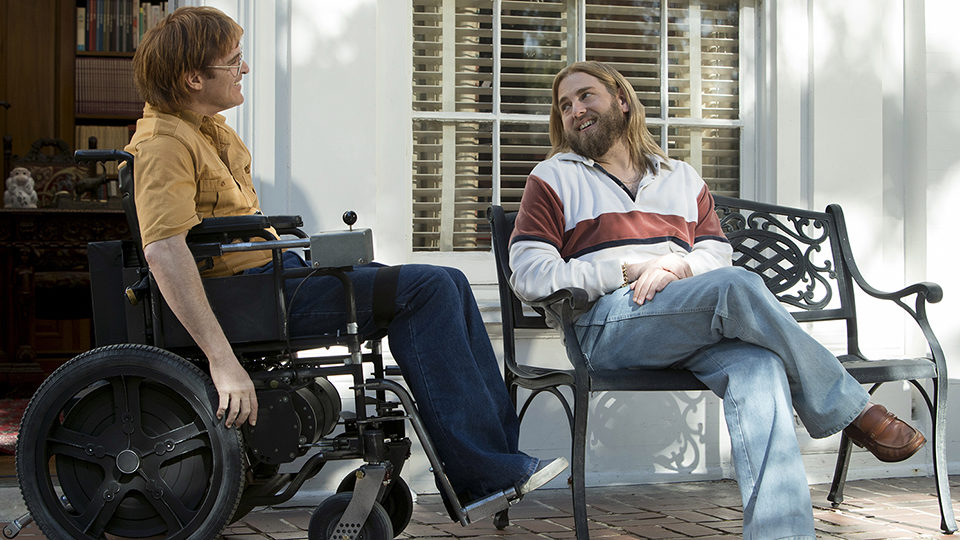
Maybe it’s because his body has so much to do—the twisting, bending, lunging, and racing, or even the eerie inertness—that his mind is free to rest and think. It doesn’t have to play games, jump off a psychological ledge. The character’s injured physique can take on the antisocial animus that Phoenix has made an extreme sport. Here we can almost believe that the winsome Rooney Mara (playing first a physical therapist, then a stewardess) would not only desire him, but go through the gyrations necessary to have sex with him.
Watching Phoenix’s red-haired terror go spastic, I kept thinking of Robin Williams. It turns out that 20 years ago, Williams approached Van Sant with the idea of making a film of Callahan’s life, partly as a tribute to his good friend, quadriplegic actor Christopher Reeve. Van Sant had actually interviewed the cartoonist for the script, but after Williams’s death, it took a different turn, became less wacky (Van Sant’s word), hewing more closely to the recovery story. Williams would have made the cartoonist funnier, but also sweeter and more sympathetic and more romantic… and possibly more mawkish.
The film has its comic moments, mostly thanks to the supporting cast. The exception is a hilarious sequence of sexual instruction and execution, offering deeply human and humorous details that provide a bridge between the worlds of the disabled and the unimpaired. But if Phoenix doesn’t generate much humor, he also acts as an astringent against the potent sentimentality of Callahan’s Saul-to-Paul transformation and pilgrimage of apology, underlined by a heart-tugging Danny Elfman score. What actor has had such a career, nominated for two Best Actor Oscars (The Master, Walk the Line) and one for supporting (Gladiator), in demand by leading adventurous auteurs like James Gray, Spike Jonze, Lynne Ramsay, and Paul Thomas Anderson, while thumbing his nose at the public, a glowering presence who has seemed at war with not only the world (us) but with his characters as well, almost defying us to stay tuned?
The cinema of discomfort ushered in by Altman and Cassavetes, and continued by Scorsese and PTA, finds its thespian avatar in Phoenix. Of course, unlikable characters are now as omnipresent as group therapy sessions to make them more likable, but Joaquin takes it to another level. There’s a long tradition of actors who, in trying to distance themselves from the whole business of acting, with its whiff of narcissism and craven, award-seeking appeal to the crowds, develop strategies like taking a leave of absence or adding weight or other disfigurements to disguise their physical beauty. Phoenix simply remains opaque, as if letting us know what he’s thinking would be some sort of artistic compromise. He dismisses fine performances like his Johnny Cash in Walk the Line as too conventional, and perhaps he will do the same with Don’t Worry, He Won’t Get Far on Foot, but I suspect there is something in his confused, out-of-joint persona to which many young men respond.
Yet as a veritable Bartleby of Iwouldprefernotto, Phoenix preempts both our adoration and our disapproval. At his strangest and most intense, as in The Master, he frightens us with something primordial, something out of control, an unwanted reminder of our animal nature. We don’t know where to look.
Molly Haskell has written for many publications, including The Village Voice, The New York Times, Ms., Saturday Review, and Vogue. She is the author of Steven Spielberg: A Life in Films and From Reverence to Rape: The Treatment of Women in the Movies.




